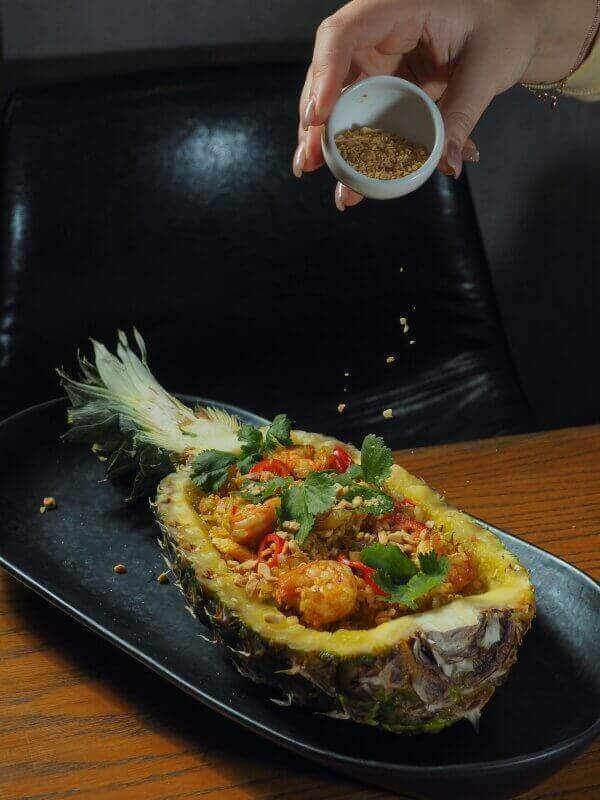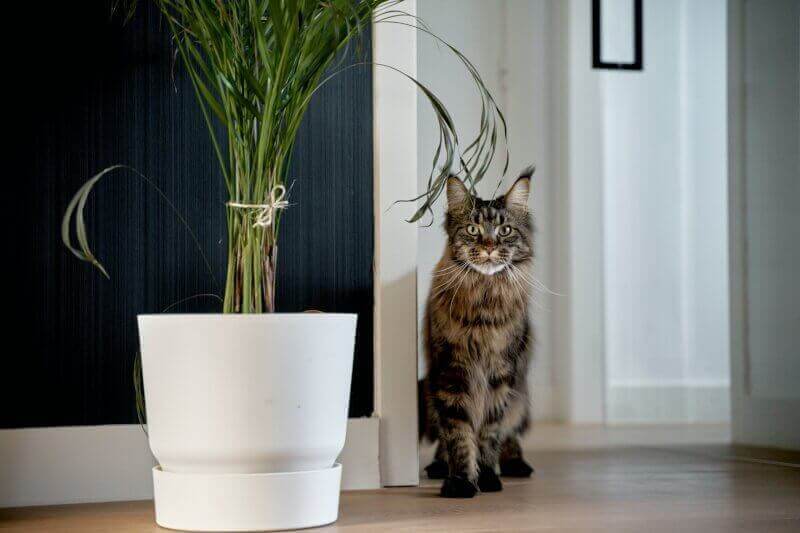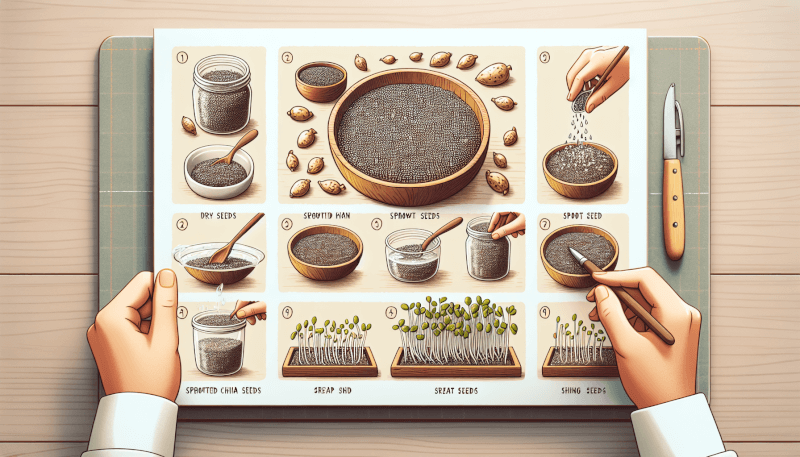👋 Click the mic button to talk to Alfred, the Todd's Seeds Gardening/Sprouting Expert – Feel free to ask him anything!
Ask Virtual Todd Anything - Click the Mic
Chia seeds, those tiny powerhouses of nutrition, have become increasingly popular in recent years. Packed with fiber, protein, and omega-3 fatty acids, these little seeds are a versatile addition to any diet. But have you ever considered sprouting chia seeds? While most of us are accustomed to eating them in their dry form, sprouting chia seeds not only enhances their nutritional value but also adds a unique texture and flavor to your meals. In this article, we will explore the benefits of sprouting chia seeds and how you can easily incorporate them into your daily routine. Get ready to discover the wonders of sprouted chia seeds and elevate your culinary adventures!
Introduction
Welcome to the wonderful world of sprouting chia seeds! Sprouting chia seeds is a simple and rewarding process that offers a multitude of benefits. Whether you are looking to enhance nutrient absorption, improve digestion, or increase antioxidant activity, sprouting chia seeds can be a game-changer for your health. In this article, we will explore the various benefits of sprouting chia seeds, learn how to sprout them using different methods, discover tips for successful sprouting, and discuss how to store and incorporate sprouted chia seeds into your daily diet. So let’s dive in and unlock the full potential of these tiny yet mighty seeds!
Benefits of Sprouting Chia Seeds
Enhanced Nutrient Absorption
Sprouting chia seeds can significantly enhance nutrient absorption in our bodies. When chia seeds are sprouted, the process activates enzymes that break down complex nutrients into more easily digestible forms. This allows our bodies to absorb and utilize these nutrients more effectively. Furthermore, sprouted chia seeds also contain increased bioavailability of vitamins and minerals, making them a powerhouse of essential nutrients.
Improved Digestion
If you struggle with digestive issues, sprouting chia seeds might be just what you need. During the sprouting process, the phytic acid content in chia seeds is reduced. This acid can hinder the absorption of certain minerals and may cause gastrointestinal discomfort in some individuals. By sprouting the chia seeds, you can reduce the phytic acid levels and make the seeds more digestible, ensuring a smoother digestion process.
Increased Antioxidant Activity
Sprouted chia seeds have been found to possess higher antioxidant activity compared to their non-sprouted counterparts. Antioxidants play a crucial role in combating oxidative stress and protecting our cells from damage caused by free radicals. By incorporating sprouted chia seeds into your diet, you can boost your antioxidant intake and support overall cellular health.

How to Sprout Chia Seeds
Now that you understand the incredible benefits of sprouting chia seeds, let’s learn how to sprout them using a step-by-step method.
Step 1: Choose Quality Chia Seeds
To begin your sprouting journey, it is important to select high-quality chia seeds. Look for organic chia seeds free from any additives or preservatives. This ensures that you are starting with the best possible seeds for sprouting.
Step 2: Rinse the Seeds
Before soaking the chia seeds, give them a thorough rinse under cold water. This helps to remove any dirt or debris that may be present on the seeds.
Step 3: Soak the Seeds
Place the rinsed chia seeds in a bowl or jar and cover them with water. The ratio of water to seeds should be approximately 5:1. Allow the seeds to soak for about 30 minutes to 1 hour, or until they have absorbed most of the water and become slightly gelatinous.
Step 4: Drain and Rinse
Once the chia seeds have soaked, drain the excess water using a strainer or colander. Rinse the seeds gently with fresh water to remove any residual slime or debris.
Step 5: Provide Optimal Conditions for Sprouting
Transfer the soaked and rinsed chia seeds to a sprouting tray, pot, or container. Make sure the container has adequate drainage to prevent waterlogging. Spread the seeds out evenly in a single layer to allow for proper sprouting.
Step 6: Monitor and Maintain Moisture
Ensure that the sprouting seeds remain moist throughout the sprouting process. Mist the seeds with water periodically to maintain optimal moisture levels. Avoid overwatering, as this can lead to mold or fungal growth.
Step 7: Harvest the Sprouts
After approximately 2-3 days, your chia seeds should have sprouted and grown to a desirable size. At this stage, the sprouts are ready to be harvested. Gently remove the sprouts from the container and rinse them to remove any remaining hulls.
Different Methods of Sprouting Chia Seeds
There are several methods of sprouting chia seeds, each offering its own unique advantages. Let’s explore three common methods:
Soil Sprouting Method
The soil sprouting method involves planting the chia seeds directly into a shallow container filled with moist soil. This method mimics the natural environment for sprouting and provides the seeds with the necessary nutrients from the soil. Keep the soil consistently moist and ensure proper drainage to prevent waterlogging.
Paper Towel Sprouting Method
The paper towel sprouting method is a convenient and easy way to sprout chia seeds indoors. Place a layer of moistened paper towels or a damp cloth in a shallow container. Spread the chia seeds evenly over the wet paper towels and cover them with another layer of moist paper towels. Keep the paper towels damp throughout the sprouting process.
Jar Sprouting Method
The jar sprouting method is ideal for those who prefer a compact and portable sprouting setup. Take a clean glass jar and fill it with water. Add the chia seeds to the jar and screw on a sprouting lid or cover the jar with a piece of breathable fabric. Allow the seeds to soak and sprout in the jar, rinsing them regularly.

Tips for Successful Chia Seed Sprouting
To ensure successful sprouting of chia seeds, here are some tips to keep in mind:
Use Organic Chia Seeds
Opt for organic chia seeds to avoid any potential exposure to harmful pesticides or chemicals. This ensures that you are sprouting the healthiest and safest seeds possible.
Choose the Right Sprouting Method for Your Needs
Consider your preferences and resources when choosing a sprouting method. Each method has its own advantages, and selecting the one that suits your needs will enhance your sprouting experience.
Keep the Seeds Moist but Not Waterlogged
Moisture is crucial for sprouting, but excessive water can lead to fungal growth. Ensure that the seeds remain consistently moist, misting them with water as needed, while avoiding overwatering.
Ensure Proper Air Circulation
Proper air circulation is essential during the sprouting process. Avoid sealing the sprouting container completely to prevent the growth of mold or mildew. Opt for breathable coverings or use sprouting lids that allow for airflow.
Avoid Direct Sunlight Exposure
Chia seeds should be sprouted in a cool, dark place away from direct sunlight. Excess heat and light can negatively impact the sprouting process, resulting in poor sprout quality.
Monitor for Mold or Fungus Growth
Regularly inspect your sprouting chia seeds for any signs of mold or fungus. If you notice any growth, discard the affected seeds and start the sprouting process again using fresh seeds.
Storing and Using Sprouted Chia Seeds
Congratulations! You have successfully sprouted your chia seeds. Now it’s time to store and incorporate these nutritious sprouts into your meals.
Storing Sprouted Chia Seeds
Place the sprouted chia seeds in an airtight container or a resealable bag. Store them in the refrigerator to prolong their freshness. Properly stored sprouted chia seeds can typically last for up to 5 days.
Incorporating Sprouted Chia Seeds into Recipes
Sprouted chia seeds can be a versatile addition to many dishes. You can sprinkle them on top of salads, blend them into smoothies, or add them to baked goods for an extra nutritional boost. The possibilities are endless, so get creative and enjoy the benefits of these sprouts in your favorite recipes.

Potential Risks and Precautions
While sprouted chia seeds offer numerous health benefits, it is important to be aware of potential risks and exercise precaution.
Allergic Reactions
Individuals with allergies to other seeds, such as sesame or flaxseeds, may also be allergic to chia seeds. If you have a known seed allergy, it is best to consult with a healthcare professional before consuming sprouted chia seeds.
Overconsumption
While sprouted chia seeds are highly nutritious, it is important to consume them in moderation. Excessive consumption can lead to digestive discomfort and potential nutrient imbalances. Incorporate sprouted chia seeds into a balanced diet and enjoy their benefits in moderation.
FAQs about Sprouting Chia Seeds
Here are some frequently asked questions about sprouting chia seeds:
Can any type of chia seeds be sprouted?
Yes, you can sprout different varieties of chia seeds, such as black, white, or mixed. The sprouting process remains the same regardless of the seed color.
How long does it take to sprout chia seeds?
Chia seeds typically take around 2-3 days to sprout, depending on the sprouting method and environmental conditions.
Can I sprout chia seeds in a dark place?
Yes, chia seeds can be sprouted in a dark place. In fact, it is recommended to sprout them away from direct sunlight to prevent heat and light damage.
Can I sprout chia seeds without soaking them?
Soaking chia seeds before sprouting helps to kickstart the germination process. While it is possible to sprout chia seeds without soaking, soaking them can speed up the sprouting time and improve overall sprout quality.
Can I consume chia sprouts if I am pregnant?
If you are pregnant, it is best to consult with your healthcare provider before incorporating chia sprouts into your diet. They may be safe to consume, but it is always wise to seek professional advice.
Are there any chia seed sprouting alternatives for people with allergies?
If you have allergies to chia seeds, there are plenty of other sprouting options available. Consider sprouting other seeds such as alfalfa, broccoli, or mung beans, which also offer various health benefits.

Conclusion
Sprouting chia seeds is a fantastic way to unlock their full nutritional potential. From enhanced nutrient absorption to improved digestion and increased antioxidant activity, sprouted chia seeds offer a myriad of benefits for your health and well-being. By following the step-by-step sprouting process, choosing the right method, and incorporating sprouted chia seeds into your meals, you can enjoy their nutritional goodness and add a flavorful and nutritious twist to your dishes. So go ahead, start sprouting those chia seeds and reap the rewards of these tiny powerhouses!